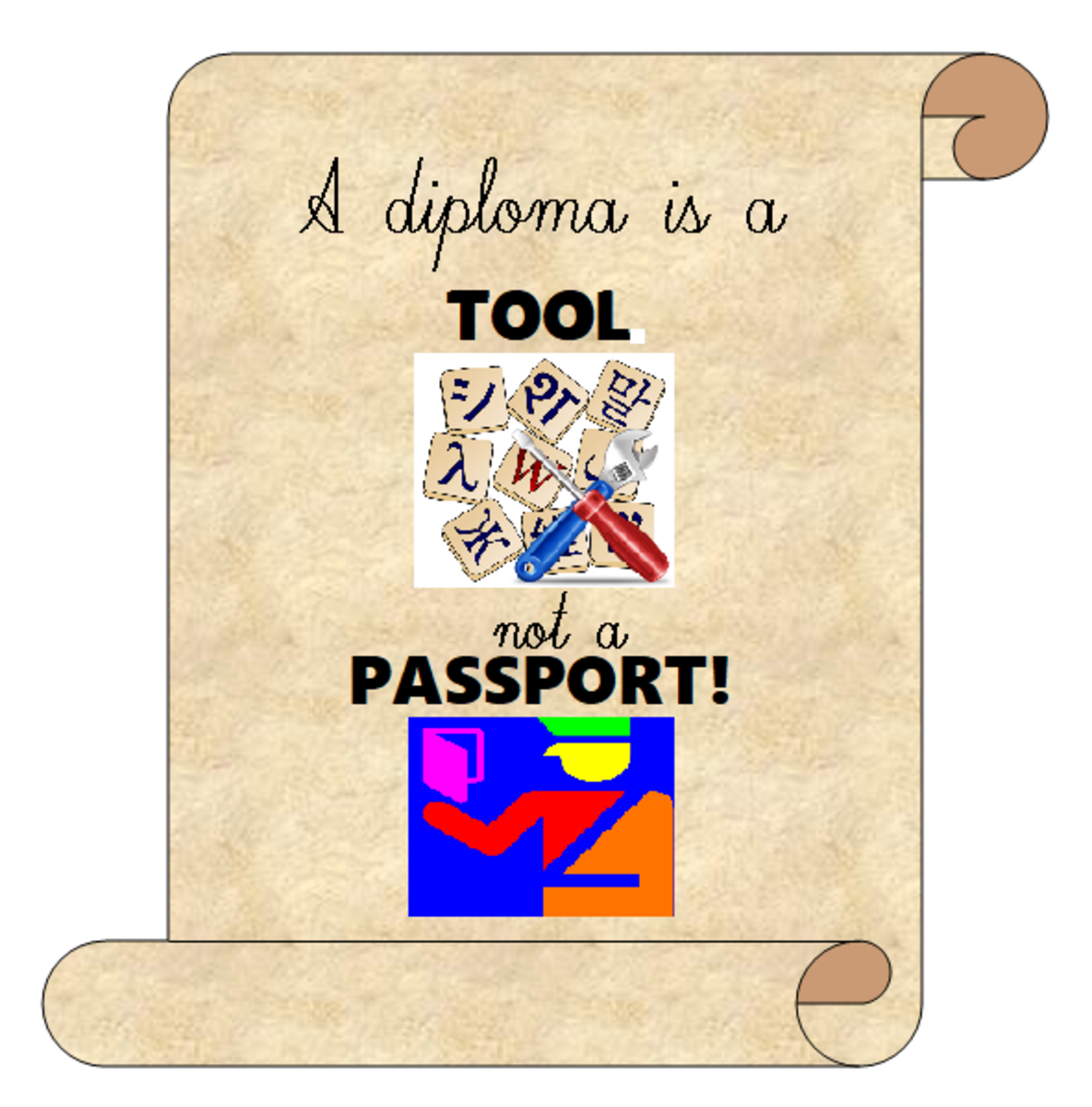How to Transfer Colleges
Understanding how to transfer colleges can save time and money
While the idea of transferring colleges may seem like a daunting process, it doesn't have to be. Like all things, planning ahead and being organized, will make transferring from one college to another a relatively simple process. This is especially true when transferring from a two-year community college to a four-year university, with the added bonus of being an excellent way to reduce the cost of college.
In fact, community colleges are often experts in assisting college transfer students. After all, community college students desiring to earn a Bachelor's degree have no choice but to transfer to a four-year university or college in order to complete their degree.
This guide on how to transfer colleges provides a general list of steps the college student needs to follow in order to transfer from a community college to a university, although the order may vary depending on the university. Additionally, keep in mind that most of these steps are also applicable to college students transferring between four-year universities.
Community college transfer students should meet with an adviser

1. Meet with transfer advisor from current college
Community colleges often have counseling, advising and transfer centers. Many times they put a lot of very useful transfer information on their website, such as transfer equivalencies and transfer guides by major and by college. Additionally, articulation agreements between the community college and state universities may also be available. Articulation agreements are a binding contract between community colleges and universities that serve as a guide for courses and grades that will transfer.
Pamphlets and printed information are also readily available at the school's counseling, advising or transfer center. It's a really good idea to be familiar with all the information and services available so costly mistakes are avoided. How terrible would it be to take and pay for a course that was not transferable?
Be sure and meet with a transfer adviser as soon as possible.Transfer advisers at community colleges are very knowledgeable about the ins-and-outs of the transfer process, as well as being familiar with the steps needed to transfer to specific universities.
Steps to take:
- Read transfer information and guides on community college website
- Pick up informative pamphlets and guides at the community college's counseling, advising or transfer center
- Meet with a transfer adviser

Poll for college graduates?
How many times did you transfer colleges before earning a bachelor's degree?
2. Apply to new college by transfer deadline (or earlier)
In addition to being familiar with all the transfer information provided by the community college, it is also recommended to become familiar with the four-year college's transfer admission process. Most colleges and universities provide all the necessary details about how to apply for transfer admission on their websites.
For college students who have already decided which college they want to transfer to, it's really helpful to read through the transfer admission process and call an admissions or transfer counselor with questions. Be sure and note the deadline for submitting a transfer application, as well as additional scores and transcripts that are required.
Many times the transfer admission process is simpler than the freshman admission process. If enough college credit hours have been earned, many institutions only require an application and a college transcript.
Be sure to determine ahead of time if the minimum number of credit hours to apply as a transfer student have to be completed by the time of application or actual enrollment. If the number of college credit hours earned falls below the threshold (which varies by university) then national test scores (ACT or SAT) and high school transcripts may also be required.
For college students with a high school GPA and national test scores that are lower than what is required for freshman admission to the university, earning enough college credit hours that meet the GPA requirement for transfer students makes it much more likely that the student will be admitted.
Steps to take:
- Read transfer admission information on university's website
- Determine how many college credit hours and GPA university requires for transfer application
- Complete transfer application by deadline or earlier

Want to transfer colleges? You're not alone.
According to the National Association of College Admission Counseling more than one-third of all students who begin college after high school at a two or four-year institution will transfer colleges by the time they earn a bachelor's degree.
New study: 1 in 3 college students transfer
By Valerie Strauss, The Washington Post
3. Send transcripts from current college to new college
Along with completing the application for transfer admission by the deadline, the four-year college or university will also require a transcript in order to determine transfer equivalencies and to transfer college credits. Oftentimes the transcript can be requested online and sent directly from one college to another. If the college transcript is picked up in person be sure to leave it sealed since the new university cannot accept a transcript that has been previously opened.
Many times, at the time the application is submitted the college transfer student is currently enrolled in college courses. It's a good idea to go ahead and send a transcript of courses completed-to-date and later send a final transcript.
After admittance the university will do an audit of the transcript to determine which courses are transferable (equivalent) and which university requirements they meet. It's a good idea to have this completed before signing up for courses.
Steps to take:
- Request transcript to be sent from one college to the other
- Follow-up to make sure that they have been received

4. Read all mail received from new college
After submitting the transfer application for admittance and sending all required documents, the university will send a letter stating whether or not the college student has been admitted.
Once a university admits a student, the student can expect a lot of mail. It is very important to read through all the mail received and take action when requested to do so. After being admitted, it is also necessary accept admission. or declare one's intent to attend. Directions on how to accept admission are usually be sent in the mail.
After the student accepts admission or intent to attend, university's often like to correspond via their university email system. Usually a letter will be sent advising the incoming college transfer student on how to access their university email.
Additional correspondence may include housing and dining information; transfer orientation dates, as well as postcards and brochures announcing other college transfer student events.
Steps to take:
- Watch for mail to see if the college student has been admitted to the university
- If admitted, read mail containing directions on how to accept admission
- Read and take action on all future mail
Tip: Universities will send a lot of important information (letters, packets, post cards, etc.). Prepare for the onslaught and have a designated folder or bin for all university mail.
College transfer students will receive a lot of mail from colleges


5. Attend transfer orientation
Transfer orientation for incoming fall transfer students usually occurs during the prior spring semester or early in the summer. Attending transfer orientation is typically required, and often parents are invited as well.
The student can expect to receive mail announcing the orientation date(s), as well as directions on how to register for this event.
Transfer orientation may include:
- Campus and housing tour
- Time to meet with a counselor or adviser
- Possible registration for courses
Transfer orientation programs for parents may include:
- Discussion of school policies and parent concerns
- Recommended ways to support college student (academically and emotionally)
- Financial aid and paying for college meetings
Steps to take:
- Watch for mail regarding transfer orientation dates and register if required to do so
- If currently enrolled in college courses bring a list of those courses in the event course registration takes place during orientation
- Be prepared to speak with an adviser regarding possible major

How to transfer colleges from collegeboard.com
Transferring from a community college to a four-year college
CollegeBoard offers a wealth of information for all college-bound students, including, how to:
- plan for college
- find colleges
- apply at colleges
- pay for college
- transfer colleges
6. Take any necessary placement tests
Transfer students may be required to take placement tests, but it will depend on which college courses have been completed to date.
For example, incoming freshman are often required to take a math, English, and possibly a foreign language placement test. However, for transfer students, if the coursework has already been completed placement tests may not be necessary.
Additionally, specific majors may require placement exams.
Steps to take:
- Find placement testing information on university's website
- If any placement tests are needed, take them as early as possible so course registration can be completed easily
Tip: For students that want to avoid taking placement exams, plan ahead and take the equivalent general education required course while at community college.

7. Complete housing contracts by deadline
Transfer students can expect a packet in the mail containing housing and dining information, as well as a housing contract. Dormitory hall descriptions, meal plans, and prices usually are also provided. Not all students are required to live on-campus, so be sure and understand these requirements prior to completing the housing contract.
Take a look at the university's housing website. It may include room photos, floor plans, or even video tours. See where each of the halls is located on campus. Some may be close to lecture halls, others may be further off campus.
Carefully examine the rules of each dormitory. Some may be co-ed, while others are designated for male or females only. Some colleges reserve dorms or halls within a dorm for like-majors. Many colleges even offer halls designated for transfer students.
When a housing contract is completed, either online or through the mail, a contract fee may also be required. For students not completely sure that they are going to attend the university, it is recommended that the housing contract be read carefully to determine if the contract fee is refundable in full, partially, or not at all.
Steps to take:
- Watch mail for housing and dining contract; and dorm preference selection
- Complete housing and dining contract by due date along with contract fee, either online or by mail
- Wait to receive a letter containing room and roommate details

8. Register for classes the first possible date
If course registration did not occur or was not possible during transfer orientation, the student should register for classes at the earliest possible date allowed.
Colleges often have a rolling window of registration dates, allowing students with senior status to register first, followed by junior status students, and down the line. The number of college credits earned at the time of registration often is the determining factor of when a student can formally register for classes.
Most class registration occurs online. It is best to figure out what classes to sign up for prior to getting online at registration time. Keep in mind, university's offer a limited number of seats per class and they can be snapped up quickly.
Steps to take:
- Verify that registration login information works before the day of course registration
- Register the first date allowed for the best selection of courses
Tip: For online course registration, pre-select desired classes ahead of time (if allowed) so that only the register or enroll button has to be clicked when registration opens up. Also be aware that students may be able to register online beginning at midnight.

In order to transfer colleges, official transcripts are needed

9. Send final college trancripts as soon as possible
If additional college courses have been completed since the college transcript was previously sent for admission, then the university will need a final transcript. Simply request a transcript from the community college online or in person, indicating the college that is to receive the transcript.
Keep in mind, if a transcript is picked up in person it needs to remain sealed and delivered to the university's registrar office.
Steps to take:
- Send a final college transcript as soon as all courses are completed
- Verify that college credit has been awarded accordingly

10. Attend welcome week activities for transfer students and move-in
Universities welcome their new students, freshmen and transfers, to campus a few days prior to the beginning of the fall semester. In addition to moving in before all other students arrive, team-building activities, tours of buildings, picnics, concerts, community service projects and other events designed to acclimate new students to college may occur.
Attendance by transfer students at some welcome week events may be required, so plan to move in at the designated time for all transfer students.
Steps to take:
- Watch mail for information about move-in day for transfer students and required activities
- Watch mail for classes like alcohol education that have to be completed before arriving on campus
- Move-in day can be a little chaotic; arrive early being sure to bring recommended items (i.e. ethernet cable for dorms without wireless internet, etc.)

11. Attend seminars for transfer students
Universities can be quite large and overwhelming to a lot of students, especially to those coming from a smaller community college environment. Large universities may have seminars for new students to help them make the transition to their new university. Some of these classes are exclusively for college transfer students. Additionally, dorm transfer halls may hold special events for transfer students.
Steps to take:
- If a university offers a course for transfer students, consider signing up for it during registration
- Be on the look out for special events for new students and consider attending one

12. Meet with academic advisor
Transfer students may have questions or concerns, and like all college students should meet with their academic adviser for assistance. If the student has declared a major, the academic adviser will be a professor from that department.
Some universities require meeting with the academic adviser prior to course registration each semester. The university may even put a hold on the registration process if this meeting does not occur. If this is the case, be sure to arrange a meeting prior to each semester's course registration date.
Steps to take:
- Meet with academic adviser for any questions, concerns, or assistance, including questions about transferred courses
- Meet with academic adviser as required, especially prior to each semester's course registration date

Knowing how to transfer colleges and the steps to take makes the transfer process simple
Transferring colleges, be it from a two-year community college or from another four-year college is a relatively straightforward process.
Being aware of all the steps to take on how to transfer colleges, makes the college transfer process simple to accomplish. Being organized with a transfer student checklist will ensure that all the steps and requirements have been completed.

- 4 Ways High School Students Can Get College Credit
With the increasing cost of college it pays to plan ahead. Did you know there are four ways high school students can get valuable college credit and reduce their overall cost of getting a degree? - 5 Easy Tips to Get College Textbooks for Less
University tuition costs are at an all-time high. When you budget for college costs, tuition, fees, room & board, remember to include college textbooks, too. College textbooks are expensive but there are ways to get textbooks for less.
More College Hubs by KTrapp
- 5 Tips for the College Transfer Student
Five tips for the college transfer student to make transferring colleges and life as a transfer student as easy as possible. - Student Health Insurance for College
Student health insurance is a must for college students. Having student insurance can even impact whether or not college is completed. - How to Reduce the Cost of College Tuition and Fees
Reduce the cost of college tuition by taking college classes at a local community college. See a cost comparison between tuition at a community college versus tuition at a 4-year college.

Do you want to write about what you know or what interests you?
Join HubPages now. It's free, simple to use & you can publish within minutes.









